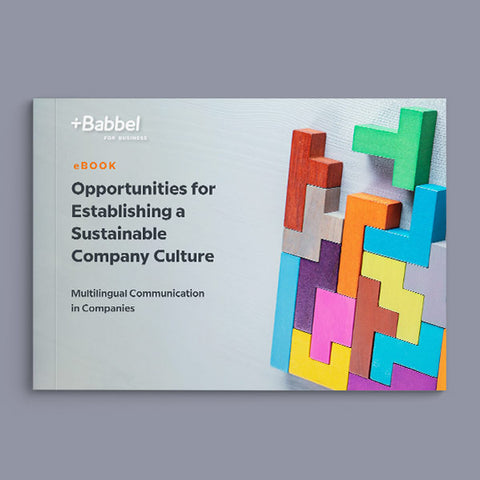In this post, we share the most important HR trends for 2023 and beyond. Use these trends to inform your HR strategies and ensure you’re equipped for the future of work.
The world of work has evolved dramatically in recent years. We’ve seen major changes in how and where people prefer to work, as well as a widespread shift in employee priorities, values, and expectations.
As such, employers must be adaptable, resourceful, and braced for change — and they must be ready to meet their employees’ needs. 2023 is all about people-first, with employee experience (EX) taking top priority.
To prepare you for the year ahead, we’ve outlined the most important HR trends for 2023. Here’s what you can expect:
- Employee experience will take center stage
- Employee engagement and retention efforts will intensify
- Learning and development will become a strategic priority
- Employers will take steps to close the leadership skills gap
- A new era of remote and hybrid work will emerge
Let’s explore each of these trends in more detail in the next sections.

How do you create a team-building company culture?
In our free eBook “Opportunities for Establishing a Sustainable Company Culture” we will show you useful tips and practical solutions for communication problems.
1. Employee experience will take center stage
Employee experience (EX) is not just a buzzword. It’s a critical success factor for any business — and in today’s labor market, it requires more attention than ever.
Gartner reports that employee experience will be a priority for 47% of HR leaders in 2023, and for good reason. The employee experience impacts retention, engagement, and performance — and it’s essential for attracting top talent in the first place. Companies who want to thrive in the new world of work must ensure their EX is exceptional.
But what exactly is employee experience, and what does a good EX look like in 2023 and beyond?
Employee experience relates to a worker’s end-to-end experience with their employer. It spans every interaction they have with the company — from hiring and onboarding to the day-to-day details of their job, right through to their career progression and eventual exit.
In their 2022 Employee Experience Guide, career and life coaching experts BetterUp identify three key components of a positive employee experience:
- inclusive leadership,
- employee wellness and well-being, and
- support for hybrid and remote workers.
Additional factors which shape the employee experience include
- company culture,
- psychological safety,
- opportunities for learning and development, and
- corporate benefits.
You’ll notice that many of the leading HR trends for 2023 are related to improving the employee experience — from boosting engagement and providing more (and better) opportunities for professional development, to introducing more well-being and health-related benefits and ensuring that managers are equipped for their roles.
At the same time, HR leaders will strive to take a more holistic view of the employee experience in 2023, designing robust EX strategies and continuously measuring their success.
Workations, jobbaticals and sabbaticals are very popular corporate benefits. In episode 13 of our podcast, we discover how these benefits can help to attract and retain talent. Listen here:
2. Efforts to retain and engage employees will intensify
A Paycor survey of over 5,000 business leaders identified employee retention as the top priority for 2023 — a trend undoubtedly driven by the shifting of power dynamics over the last few years, which has increasingly given employees the upper hand.
First, the Great Resignation saw record numbers of people leaving their jobs towards the end of 2021, with the effects still palpable in 2023. At the same time, employers now have a new movement to contend with: quiet quitting. Quiet quitting describes those who, rather than leaving jobs they’re unhappy with, stay but give the bare minimum — fulfilling the basic requirements of their role and nothing more.
A Predictive Index survey estimates that the average cost of a single resignation is approximately $11,372 per employee, while quiet quitting costs U.S. businesses up to $500 billion each year.
Going into 2023, HR leaders will be intensifying their efforts to engage and retain employees. In the aforementioned Paycor survey, company culture, salary and benefits, and flexible working schedules came out as the primary drivers of retention. As such, employers will look to offer more competitive salaries, improve their paid leave policies, and allow their employees more flexibility.
In terms of employee engagement, the focus will be on devising more
- meaningful learning and career development pathways,
- employing effective appreciation and recognition strategies (including dedicated employee recognition programs) and
- helping employees to maintain a healthy work-life balance.
With their retention and engagement efforts, HR leaders will pay particular attention to millennial and Gen Z employees who are more likely to quiet quit.
In another blog post, learn more about how you can support mental health in the workplace.
3. Employee upskilling and reskilling will take priority (and look slightly different)
As employers seek to engage and retain their employees, navigate the new norms of hybrid and remote work, and generally future-proof their business, all roads will lead to employee learning and development.
With 77% of workers eager to learn new skills and an impressive 94% reporting that they’re more likely to stay with an employer who invests in their learning and development, HR leaders will prioritize employee learning as part of their retention strategies. At the same time, addressing skills gaps internally and investing in workforce development will offer a more sustainable approach to business growth.
So what’s changing in 2023?
First, we’re seeing a major shift in how employers view, and value, learning and development. In many companies, professional development has often been positioned as a perk — available to employees if they can find time for it. Now, as we move into 2023, we’ll see L&D become a major strategic priority.
From 2021 to 2022, demand for dedicated L&D professionals grew by 94%. And, in 2022, 49% of companies increased their L&D budget (compared to 41% in 2021). These trends will continue through the year, repositioning employee development as a must-have rather than a nice-to-have.
Not only will L&D take higher priority, it will also evolve to meet the modern learner’s needs. We’re seeing a number of learning and development trends emerging, with microlearning, gamification, mobile learning, and personalization all at the forefront.
In another blog post, find out about Employee Development 2.0: The New Way to Upskill Your Employees.
4. Employers will take steps to close the leadership skills gap
In their annual survey of over 800 HR leaders, Gartner found that ‘leader and manager effectiveness’ is a priority for 60% of HR leaders going into 2023, with 24% expressing concerns that their current approach to leadership development does not prepare managers for the future of work.
There are several dimensions to the leadership skills gap. On the one hand, it’s about today’s managers and leaders not having the necessary skills, support, and training they need to lead effectively both now and in the future.
At the same time, it highlights a disconnect between how leaders perceive themselves and how their employees perceive them. In a survey of 1,500 U.S. workers, 86% of senior leaders agreed that “leaders in my organization inspire others to be compassionate in their work and personal lives” while only 65% of workers agreed.
The leadership skills gap is not a new issue — but it will receive renewed attention and investment from HR leaders in 2023. The corporate leadership training market is expected to grow by $18.5 billion from 2021-2026, progressing at an annual growth rate of 9.51% as companies increase their spending on leadership training initiatives.
In particular, employers will seek to address the need for more human-centric leadership, equipping managers to communicate more effectively, to lead with humility and vulnerability, to approach with empathy, and to welcome and encourage feedback.

5. Remote and hybrid work policies will be formalized
One of the biggest changes in recent years is the rise of remote and hybrid work. What initially arose as a result of the pandemic is now the preferred way of working for many employees — compelling employers to not only allow for remote working, but to establish clear policies and expectations around it and to ensure that remote workers have all the tools and support they need.
In 2022, remote jobs received the overwhelming majority of applicants (54%), while a Robert Half survey found that 50% of professionals working from home would look for a new job if their current employer required them to return to the office full-time.
As we move through 2023, employees will continue to favor employers who offer remote and hybrid work. And as employers strive to attract and retain the best talent and improve the employee experience, we’ll see a new era of remote work taking shape. HR leaders will focus on establishing formal remote work policies, communicating clear expectations and protocols for remote workers, and ensuring they have the necessary infrastructure in place for distributed teams to succeed.
HR trends for 2023: the takeaway
2023 is the year of human-centric HR. The overarching priority will be to improve the employee experience (EX), with HR leaders focusing on employee retention and engagement, more strategic and personalized learning and development initiatives, and equipping leaders for the future of work. Employers are recognizing that a people-first approach is the key to business success — and in 2023 and beyond, they’ll be investing their time, money, and efforts accordingly.

How do you create a team-building company culture?
In our free eBook “Opportunities for Establishing a Sustainable Company Culture” we will show you useful tips and practical solutions for communication problems.





